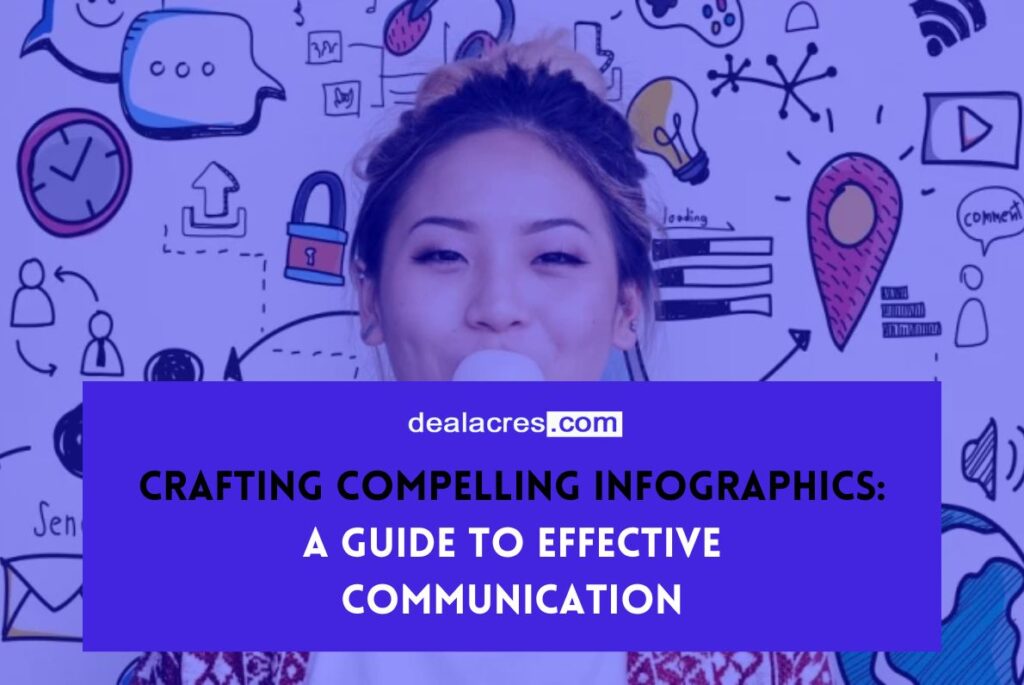Introduction:
In today’s fast-paced world, where information overload is the norm, capturing and maintaining audience attention is no easy feat. As a result, the need for effective communication has never been more crucial. One powerful tool that has emerged to meet this demand is the infographic. Infographics are visual representations of information that combine images, charts, and text to convey complex ideas in a simple and engaging manner. In this article, we’ll explore the art of creating engaging infographics to enhance communication.

I. Understanding the Power of Infographics:
1.1 Visual Appeal:
Humans are inherently visual creatures. We process visuals much faster than text, and infographics leverage this preference. A well-designed infographic can quickly grab attention and communicate information more effectively than a block of text.
1.2 Information Retention:
Research suggests that people remember information better when it is presented in a visual format. Infographics help to condense and organize information, making it easier for the audience to understand and retain key messages.
II. Key Elements of a Successful Infographic:
2.1 Clear Purpose:
Before diving into the design process, it’s crucial to define the purpose of the infographic. Is it meant to educate, persuade, or entertain? Knowing the primary goal will guide the content and design decisions.
2.2 Target Audience:
Understanding your audience is essential for crafting a relevant and engaging infographic. Consider their interests, preferences, and knowledge level to tailor the content and design to resonate with them.
2.3 Simplicity and Focus:
An effective infographic is simple, focused, and avoids information overload. Stick to the essential points and present them in a logical flow. Use concise text and compelling visuals to convey the message without overwhelming the audience.
III. Planning Your Infographic:
3.1 Research and Gather Data:
Start by collecting the information you want to present. Use reliable sources and ensure the data is accurate and up-to-date. Organize the information into key points that align with the infographic’s purpose.
3.2 Storytelling:
Infographics are not just about data; they’re also about telling a story. Arrange the information in a narrative format that guides the audience through a logical sequence. This helps in maintaining interest and ensuring a smooth flow of information.
IV. Designing an Engaging Infographic:
4.1 Choose a Template:
Select a layout that suits your content and purpose. Numerous online tools and software offer pre-designed templates that you can customize. Ensure the template supports your narrative and doesn’t distract from the main message.
4.2 Color Scheme and Fonts:
Use a cohesive color scheme that aligns with your brand or topic. Choose fonts that are easily readable and complement the overall design. Consistency in color and font creates a visually appealing and professional look.
4.3 Visual Elements:
Incorporate relevant visuals, such as icons, illustrations, or images, to enhance understanding. Visuals should complement the text and convey information efficiently. Infographics are a balance between text and visuals, so ensure a harmonious integration of both elements.
4.4 Data Representation:
If your infographic includes data, use charts, graphs, or diagrams to present information in a visually compelling way. Ensure that the data visualization is clear and easy to interpret. Labels and legends should accompany visuals to provide context.

V. Engaging Your Audience:
5.1 Call-to-Action:
Include a clear call-to-action to guide the audience on the next steps. Whether it’s visiting a website, sharing the infographic, or taking a specific action, a well-defined call-to-action encourages engagement.
5.2 Shareability:
Design your infographic with shareability in mind. Social media platforms are excellent channels for disseminating infographics. Ensure the dimensions are suitable for various platforms, and include social sharing buttons to encourage wider distribution.

VI. Testing and Iteration:
6.1 Review and Revise:
Before finalizing your infographic, review it for accuracy, clarity, and visual appeal. Seek feedback from colleagues or friends to ensure that the message is easily understood. Make necessary revisions based on the feedback received.
6.2 A/B Testing:
If possible, conduct A/B testing with different versions of your infographic to determine which one resonates better with your audience. Analyze metrics such as engagement, shares, and conversions to refine your future infographic designs.
Conclusion:
In a world flooded with information, the ability to communicate effectively is a valuable skill. Infographics serve as a powerful tool to distill complex information into a visually engaging format. By understanding the principles of crafting compelling infographics and following a systematic approach, communicators can enhance their ability to capture attention, convey messages, and leave a lasting impact on their audience. Start creating infographics that not only inform but also inspire and captivate your audience today.




